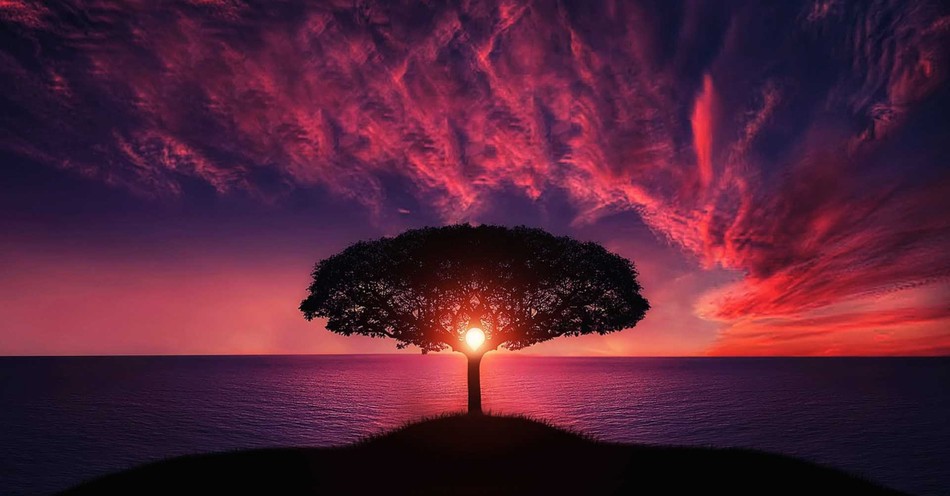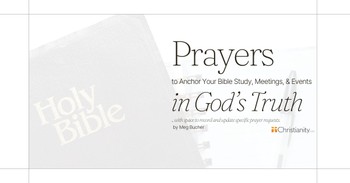A farmer is given seeds and told they are apple seeds. He plants them in the ground, and the shoots begin to emerge from the soil. Those shoots become trees. The farmer is skeptical when he sees the trees, but he lets the process play out. When the fruit appears, however, they are oranges.
What will he conclude? As much as he tilled the soil and watered the trees, none of that produced the fruit he desired. The issue, the switch, happened at the very beginning. Obviously, he had been given the wrong seed. The nature of a thing determines what it will produce. Source determines the end.
The Bible explains the corruption in our world: it all happened at the beginning. A simple choice corrupted God’s perfect and complete creation, yet that decision had an immense impact lasting to the present. What was that choice?
God gave humanity one rule at creation: don’t eat from the Tree of the Knowledge of Good and Evil. Adam and Eve did eat from the Tree of the Knowledge of Good and Evil. Due to this disobedience, a switch happened—from life to death. Humanity’s nature became corrupt to the core, producing sin and destruction.
What does this all mean for us today? What was so important about the Tree of the Knowledge of Good and Evil?
Where Was the Tree of the Knowledge of Good and Evil Located?
Genesis 1-3 gives us the secret of the beginning. God spoke and created the universe, the earth, step by step. The Lord then designed a little heaven on earth, called the Garden of Eden. He fashioned his special creation (this time with his hands) beings made in his image and purposed with managing and spreading that heaven on Earth, bringing God’s loving dominion overall, through having kids.
Scholars have discussed and argued over where the Garden of Eden was located. Southwest Asia and East Africa seem to be the predominant theories. Given Genesis’ descriptions of the different rivers, Southwest Asia makes the most sense. However, the traumatic worldwide flood in the days of Noah may have severely reshifted the earth’s landscape.
In the middle of the Garden, God placed two trees. First, the Tree of Life. Second, the Tree of the Knowledge of Good and Evil. There was only one rule in that heavenly garden: don’t eat of the Tree of the Knowledge of Good and Evil. That was it—one rule. God communicated the consequences: Adam and Eve would die if they consumed that fruit. The implication was that they were free to eat of the Tree of Life and could therefore live forever. That would end at once if they disobeyed the one rule.
An indeterminate amount of time passed, but Eve believed the accuser’s lie at some point. Adam and Eve ate from the forbidden tree. They were summarily exiled from paradise, notably to keep corrupt people from living forever by access to the Tree of Life, and humanity now operated under the curse of death.
While they didn’t immediately die, as they kept breathing and their hearts kept beating, something happened to all of creation. In science, they call it entropy, everything tending to destruction and decay and death. Now Adam and Eve would work for their basic survival, a hopeless endeavor since they would die no matter what they did or how hard they worked.
All because of one simple but tragic choice.
Why Did God Place the Tree in the Garden?
If it was that big of a deal, why would God even give them a choice?
The kingdom of God doesn’t work by coercion or force. God is love (1 John 4:8). That’s who he is. Love doesn’t work off of obligation or duress but is a free choice.
Genesis describes the relationship between Adam and Eve and God. They walked together through the Garden, a tender and intimate visual. Adam and Eve worked with God to manage Heaven on Earth, naming things with the Father.
Because God is love, for Eden to be a paradise, it couldn’t be a prison. To have loving, willing participants in God’s grand design, Adam and Eve were allowed to exercise a different will than God’s. Being perfect and complete, then, includes the ability to choose to leave paradise. Otherwise, it’s abuse or manipulation, not love.
Jesus was the perfect, sinless Son of God, and he possessed a will different from his Father and had to make a choice. Christ expressed his unwillingness to move forward in another garden, begging for another choice, but he submitted and trusted unto his Father’s will and love. Seeing the joy before him, Jesus chose the cross not out of obligation or manipulation, but love (Matthew 26:36-46).
God wouldn’t even force his Son to die to save the world. That’s not who he is.
We can’t be righteous if we’re forced to do what is right. God requires willingness.
Therefore, there had to be a choice away from God so that the relationship could be one of true intimacy and love.
Why Was it a Problem for Adam and Eve to Know Good and Evil?
Fruit carries within it the seed for multiplication. To eat from the Tree of Life, not only would Adam and Eve live forever, but they would pass that on to their children. Eating from the Tree of the Knowledge of Good and Evil brought death to Adam and Eve, spiritually and physically. That death also multiplied, continuing through their multiple offspring.
Like the farmer in the story above, the seed was switched, changing everything from that point. How are the two “seeds” different?
God isn’t righteous because there is a moral order apart from himself that he follows. In other words, there isn’t this moral, holy standard out there that he adheres to and then becomes righteous.
Jehovah himself is the moral order. He is holy and righteous (Isaiah 6:3; 1 Corinthians 1:30). We only know what is good in an intimate relationship with the One who is the only good (Matthew 19:17).
In geometry, to have coordinates on a plane, to have any direction or build anything, we must have an origin point to have the x and y axes. Otherwise, the coordinates make no sense and mean nothing. It’s vain and empty information without that origin point.
Adam and Eve needed that constant connection with God to fulfill their purpose. That is perfection and strength, not weakness or sin. Again, Jesus had all authority and was perfect and sinless and taught his disciples that he only did what he saw the Father do and only said what the Father said (John 5:19-20, 12:49). Constant obedience from relationship and love.
Choosing the Tree of the Knowledge of Good and Evil was trusting in a moral order apart from God. God is the moral order, the pattern and the origin point. They chose to make themselves the origin point, which is a lie, and lies lead to death.
That’s the seed that was switched.
It doesn’t say that Eve and Adam were walking with God, and he led them up to that forbidden tree. Nope, he was absent. They were already there without God, tempted because the fruit looked good and pleasing. But it was death, and the serpent accuser took that opportunity to hurt God and destroy us.
In that other garden thousands of years later, Jesus knelt and prayed, sweating drops of blood. Despite how painful and displeasing the choice appeared in the moment, Jesus, as the “second Adam,” chose to keep his Father as the origin point and submitted his will to the God of love.
The reward of Jesus was the name above all names (Philippians 2:9) and the joy of reconciled relationship with you and me (Hebrews 12:2)… if we choose him.
What Can We Learn from God’s Rule Against the Tree?
When we understand the problem with the Tree of the Knowledge of Good and Evil, the rest of Scripture makes sense.
The law, while good, was never meant to be the solution (Galatians 3:23-24). God’s promise to Eve was a person, a child that would redeem by defeating the Devil. The answer was never going to be a new moral order.
When God gave the law, as good as it was, it was the ultimate fulfillment of Adam’s choice of the Tree of the Knowledge of Good and Evil. The letter of the law leads to death (2 Corinthians 3:6), Paul states, just as the consequence of that forbidden fruit was death. Why? Because the Law of Moses was based on the human ability to produce righteousness, which had to ultimately fail (Romans 8:2-4). How could a corrupt nature produce corruption? It can’t. That’s still making ourselves the origin point, and it means nothing. Our righteousness is but “filthy rags” (Isaiah 64:6).
The source had to be changed from us back to God. The Tree of Life was given back to us in Christ. Jesus told us to consume him, eat his flesh and drink his blood like a piece of fruit (John 6:56). So we could be righteous in reality, with meaning, because our nature has been changed through the death and resurrection of Jesus. We are new creations, born again, translated from death to life.
We were given a new “seed,” from the one that’s killing us back to the original design. Jesus used the symbol of a seed in several parables to symbolize the power of the Word of God.
Our culture often makes the same mistake, eating from that forbidden tree, by measuring God against their own moral code. “If God is good or loved us, then ….” They often reject God because he doesn’t live up to their ideas of right and wrong, good and evil, and what they think should happen. What people misunderstand is that God is the good.
We must return to our reliance upon him to enjoy the good we so desperately desire. When we stick with God, cling to Him, we are promised that “all things work together for good.”
CS Lewis said in Mere Christianity that Jesus didn’t come to make better humans but new ones, a different lineage from the Spirit than our human nature.
We still need to reject the Tree of the Knowledge of Good and Evil, take up our cross daily, and follow Jesus.
We must reject any trust in our power, goodness, understanding, or ability. We must place all of our hope upon the person of God through the work of Christ. We must submit our will to God’s revelation and reality with confident expectation that he is a rewarder of those that seek him with all diligence (Hebrews 11:6).
If we seek to save our lives, then we lose them. If we lose our lives for God and the Gospel Truth, we find true life (Luke 17:33).
He is the origin point, and when we refuse to be our own absolute, we find who we truly are in relation to him. Our identity now has meaning and stability.
The result? We return to heaven on earth, a kingdom of “righteousness, peace, and joy” (Romans 14:17), redeemed back to living forever, back to our purpose to spread God’s loving authority (the Gospel), back to hope and a future. We become trees with immortal fruit in and out of season for the benefit of all (Revelation 22:2).
Peace.
Photo Credit: ©Pexels/Pixabay

This article is part of our Christian Terms catalog, exploring words and phrases of Christian theology and history. Here are some of our most popular articles covering Christian terms to help your journey of knowledge and faith:
The Full Armor of God
The Meaning of "Selah"
What Is Grace? Bible Definition and Christian Quotes
What is Discernment? Bible Meaning and Importance
What Is Prophecy? Bible Meaning and Examples

.jpg)

.jpg)
